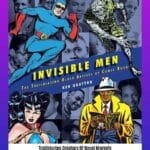Uncover the enigmatic tales of history’s most innovative oddballs—pioneers who dared to challenge the norm and ignite transformative breakthroughs. In this captivating journey, we explore their eccentric brilliance and unwavering determination, revealing their profound impact on the tapestry of human progress.
Key Takeaways:

- Innovation can be systematically fostered by applying evolutionary principles.
- Breakthroughs arise from a balance of generating diverse ideas (variance generation) and selecting the most effective ones (selection pressure).
- Innovations create new markets by introducing products or technologies that fulfill unmet needs.
- Systematic ideation leads to a wide range of solutions, while selection pressure favors the most promising ones.
Innovative Oddballs Behind Major Breakthroughs
In the annals of scientific history, the path to groundbreaking discoveries is often paved by the audacity of innovative oddballs. These maverick thinkers challenge conventional wisdom, embrace the fringes of knowledge, and push the boundaries of innovation.
Breaking the Norms with Originality
Innovative oddballs are not simply eccentric characters; they possess a unique blend of creativity, determination, and a willingness to deviate from the norms. They operate outside established paradigms, seeking novel approaches to unravel complex problems.
Catalyst for Creative Destruction
Breakthrough innovations often stem from a process that mirrors Darwinian evolution. By generating a wide spectrum of ideas and experimenting relentlessly, innovative oddballs create a pool of potential solutions. Through selective pressure, only the most viable innovations survive and go on to revolutionize industries.
Oddballs in Action: Notable Examples
History is replete with examples of innovative oddballs who have reshaped our world.
- Albert Einstein: A visionary physicist who defied the Newtonian world order with his theory of relativity.
- Grace Hopper: A computer scientist who pioneered the development of the first compiler, laying the foundation for modern programming.
- Elon Musk: An enigmatic entrepreneur who has pushed the envelope in space exploration and electric vehicles.
Embracing the Innovative Spirit
To foster innovation, we must encourage and support the innovative oddballs among us. They are the catalysts for transformative ideas and the architects of a brighter future. By recognizing their value, we can create an environment that nurtures creativity, embraces experimentation, and celebrates the transformative power of unconventional thinking.
There have been certain quirky pioneers who have made their mark on history with their unusual methods, such as eccentric pioneers with unorthodox methods, who were pioneers in their respective fields, and made their mark through unconventional means. Then there are eccentrics who refused to conform, like these pioneering eccentrics who zigged while others zagged. And finally, we have those who marched to the beat of their own drum, like these unconventional pioneers who marched to own beat.
Marie Curie and the Discovery of Radium
Marie Curie is an apt representation of the term “innovative oddball.” As a pioneering physicist and chemist, she was not content with the status quo and pushed the boundaries of her field. These are some of the interesting discoveries about her:
Key Takeaways:
- 1898: Marie Curie discovered polonium, named after her native country Poland.
- Six months later: She discovered radium, an even more potent element.
- 1903: Curie and her husband, Pierre Curie, received the Nobel Prize in Physics for their research on radiation phenomena.
- 1911: Curie received the Nobel Prize in Chemistry for her discoveries of polonium and radium, as well as her study of the nature and compounds of radium.
Curie’s unwavering dedication and meticulous research led to her groundbreaking discoveries. She is an inspiring example of the power of curiosity and the pursuit of knowledge.
Citation:
Marie and Pierre Curie and the discovery of polonium and radium
Nikola Tesla and the Invention of the AC Induction Motor
Back in the days when tinkering with electricity seemed like sorcery, a man named Nikola Tesla emerged from the depths of obscurity to illuminate the world with his groundbreaking inventions. Among his many feats, the invention of the AC induction motor stands out as a pivotal moment in the history of electrical engineering.
Tesla’s Induction Motor: A Game-Changer for Industry
Picture this: factories humming with activity, machines whirring in unison, all thanks to the relentless power of electricity. But hold on, there was a catch – the DC motors used at the time restricted the distance over which electricity could be transmitted. Enter Tesla’s AC induction motor, a revolutionary invention that changed the game. With its rotating magnetic field, Tesla’s motor made it possible to drive machines from a single unit, opening up a world of possibilities.
The Birth of AC Power Transmission
The induction motor wasn’t just a boon for factories; it was the linchpin for the distribution of electricity over long distances. No longer were cities and towns constrained by the limitations of DC power. Tesla’s invention paved the way for the widespread adoption of AC power transmission, bringing electricity to far-flung corners of the world.
A Legacy of Innovation
Tesla’s induction motor has left an enduring legacy. It’s the workhorse behind countless industrial applications, powering everything from conveyor belts to elevators. The invention earned Tesla a place in the National Inventors Hall of Fame, a testament to its profound impact on society.
Key Takeaways:
- Nikola Tesla invented the AC induction motor, utilizing a rotating magnetic field.
- This invention revolutionized industrial machinery and made AC power transmission possible.
- Tesla’s motor played a pivotal role in the electrification of cities and towns.
Most Relevant URL Source:
Rosalind Franklin and the Discovery of the Structure of DNA
In the tapestry of scientific discovery, Rosalind Franklin’s contributions to unraveling the secrets of DNA stand out. Her innovative techniques and meticulous observations played a pivotal role in the historic elucidation of this molecule’s structure.
Key Takeaways:
- Innovative Oddball: Defying conventional wisdom, Franklin developed novel X-ray diffraction techniques, pushing the boundaries of scientific methods.
- Unsung Hero: Franklin’s keen eye revealed crucial details about DNA’s structure, which were initially overlooked but later became essential for its discovery.
- Partnership in Progress: Though uncredited at first, Franklin’s work laid the foundation for James Watson and Francis Crick’s groundbreaking model.
- Recognized Pioneer: Years after her untimely passing, Franklin’s contributions were finally acknowledged, cementing her legacy as a visionary in the field of molecular biology.
Most Relevant URL Source:
Rosalind Franklin: The Dark Lady of DNA

FAQ
Q1: Who was responsible for discovering polonium and radium?
A1: Marie Curie discovered polonium in 1898 and radium six months later.
Q2: What significant invention did Nikola Tesla make?
A2: Tesla invented the induction motor, which made unit drives for machines feasible and AC power transmission possible.
Q3: How did Rosalind Franklin contribute to the discovery of DNA’s structure?
A3: Franklin differentiated between the A and B forms of DNA, which helped James Watson and Francis Crick formulate their findings.
Q4: What was unique about the approach to innovation used by these innovative oddballs?
A4: They applied the principles of evolution in nature, focusing on variance generation and selection pressure to create breakthrough innovations.
Q5: Why is it important to recognize the contributions of innovative oddballs?
A5: Their unconventional thinking and dedication to exploration have pushed the boundaries of human knowledge and led to major breakthroughs.
- Mastering Leader in Spanish: The Complete Guide - April 19, 2025
- Uncovering Surprising Parallels: England Size Compared to US States - April 19, 2025
- Old Mexico Map: Border Shifts 1821-1857 - April 19, 2025
















